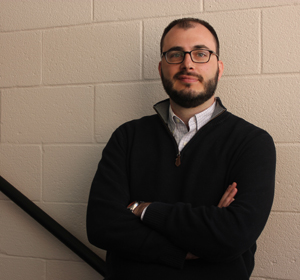 Jared Reck's debut novel, A Short History of the Girl Next Door, is a powerful story about friendship and popularity, high school romance, and overcoming tragedy. An eighth-grade English language arts teacher, Reck lives in Hanover, Pennsylvania with his wife and two daughters.
Jared Reck's debut novel, A Short History of the Girl Next Door, is a powerful story about friendship and popularity, high school romance, and overcoming tragedy. An eighth-grade English language arts teacher, Reck lives in Hanover, Pennsylvania with his wife and two daughters.
Do any of the characters or events portrayed in this story mirror your personal experiences with love and life?
Absolutely. I think all of us understand the feeling of unrequited love—from the earliest unreciprocated crushes of elementary and middle school to the all-encompassing, soul-crushing kind that comes a little later. Good times.
Matt is very much based on me in terms of interests and personality as a teenager, and I still have an inner-romantic movie director running overdramatic clips of how moments in my life should be playing out. He still sucks, too. So while I never experienced the same loss that Matt does firsthand, I’m pretty sure his reactions—the heartfelt and the heinous alike—mirror what my own would have been.
What inspired you to write A Short History of the Girl Next Door?
I wish I could say that [A Short History of the Girl Next Door] came from some big idea, but it didn’t. It really just started with a character.
I teach eighth-grade ELA, which I run as a writing workshop, and every year we do a pretty in-depth unit on fiction writing. We always start the process by developing a believable main character using a simple questionnaire—about 20 questions answered in the voice of that character, almost like you’re sitting down across the table from your character and recording whatever he or she says to you. (I still start all my stories this way, with about 20-30 pages of character responses before I ever try writing the first chapter.)
About seven or eight years ago, I’d finished my first short story with my students—a 30-page story about a dweeby eighth-grade orchestra member sitting in in-school suspension—and I loved how it turned out. So when I sat down and started a new character with my students the next year, I ended up loving this kid even more: he was funny, and self-deprecating, and stuck inside his own head all the time, and he lived and breathed basketball. He was Matt.
So before I ever knew where I was going with the story—before I knew I’d even attempt to turn it into a novel—I had this character, this voice, that I loved. (I’m still not sure I ever figured out plot.)
In what ways did your students help you to write this novel?
My students have always kind of been my first readers, little snippets at a time. In my classroom, I never ask my students to do anything I’m not willing to do, too, so I am always writing with them, whether it’s memoir or poetry or fiction or whatever. I model with my own writing throughout the entire process, and, honestly, I’m usually trying to make them laugh. So if I can read a passage and make a roomful of eighth graders laugh, I know I’m on the right track. They’re not always the easiest audience.
What was the biggest obstacle you faced when writing this novel? Were there any moments in the story where you felt particularly ‘stuck’?
Ordinary, everyday life.
Besides teaching full-time, I also worked through a master’s program in educational leadership, I’m an elected member of the school board (in the district where I live, not where I teach), I’m on my town’s recreation board, and with two daughters (one a senior in high school this year), my wife and I are constantly volunteering for the music booster club and the theater booster club and going to concerts and practices and sporting events and Girl Scouts and…yeah. Life.
Definitely not a struggle—I love being involved in all these things—just full. So, especially with this first book, it was hard to dedicate so much time away from family to work on something that may never go anywhere. And that was one of the biggest challenges—just having the commitment to keep going. To assuage all the crippling self-doubt with the thought that, even if this never gets published, I’ll still be a better human being for having done it—that I’d regret never finishing way more than never publishing.
What advice would you share with aspiring young authors?
It’s okay to fake it. Seriously. I just finished writing my second novel, and I still feel like I’m faking it—like I still shouldn’t really call myself a writer. But even if you feel that way—and I bet most of us feel that way—go ahead and pretend like you’re a real-live writer anyway: join an organization like the Society of Children's Book Writers and Illustrators, take a class or a workshop, find a writing friend or two, do your research, keep reading and writing, and pretend that you’re already so successful that you can write about whatever the heck makes you truly happy. (I wrote about Nerds, corked wiffle ball bats, and almost inappropriately good gravy.)
Samantha Stinchcomb is a former intern at the International Literacy Association.